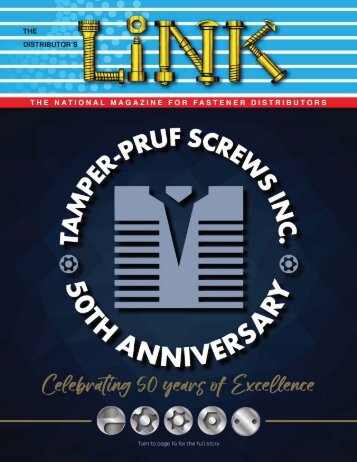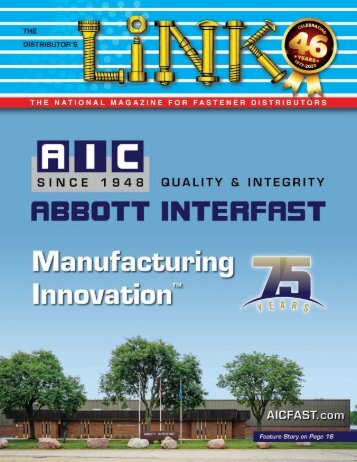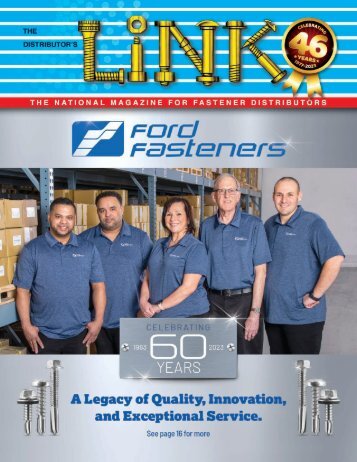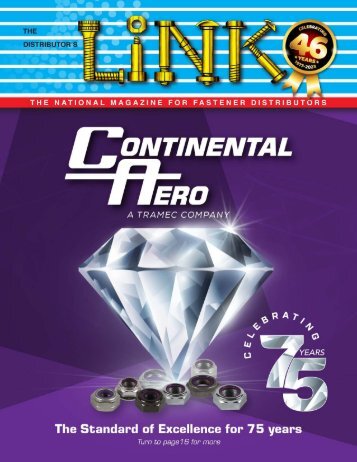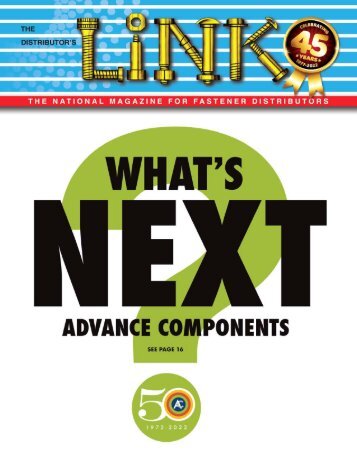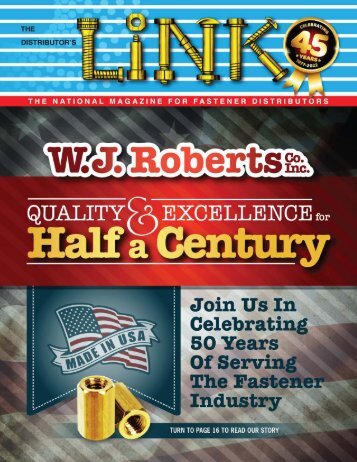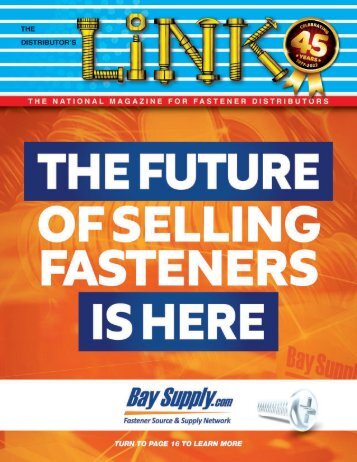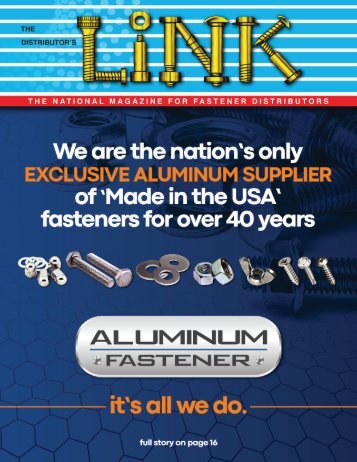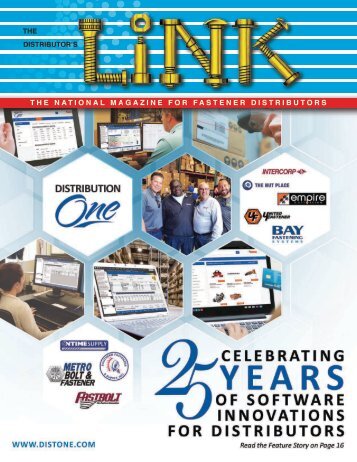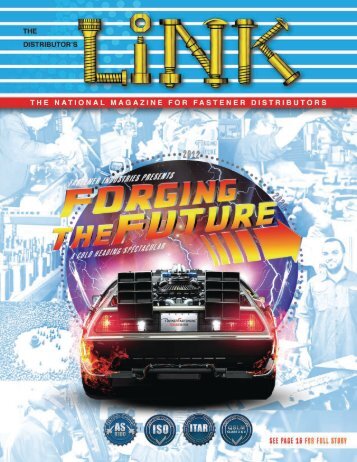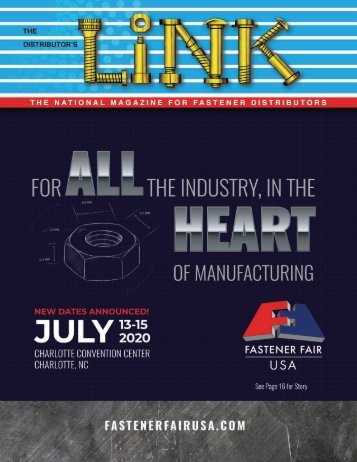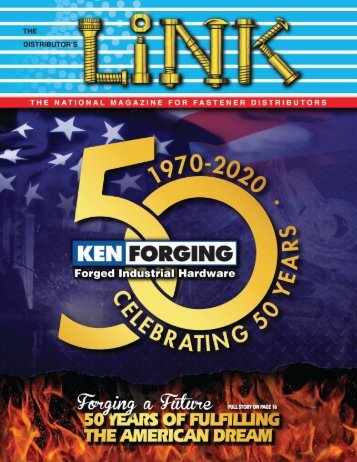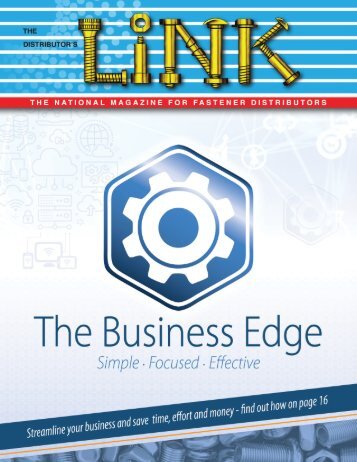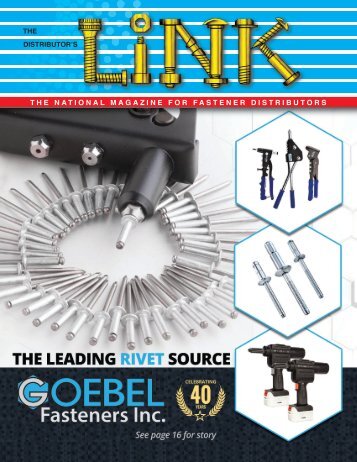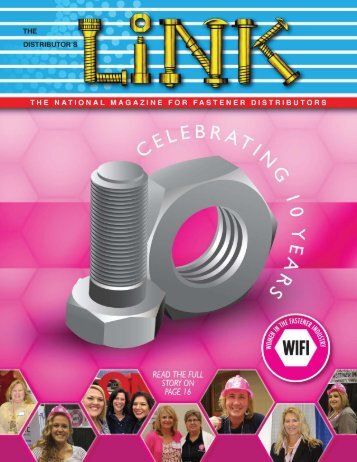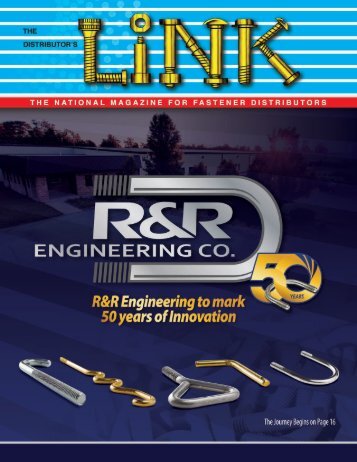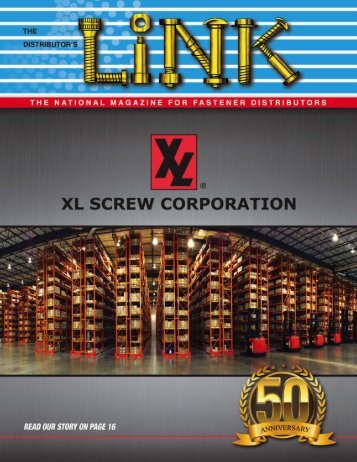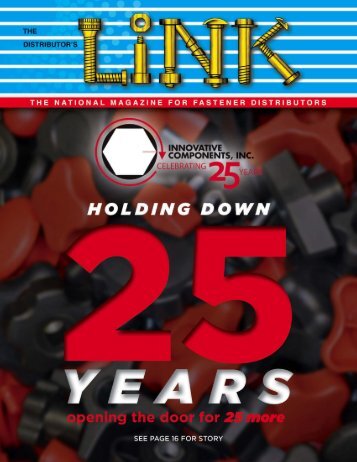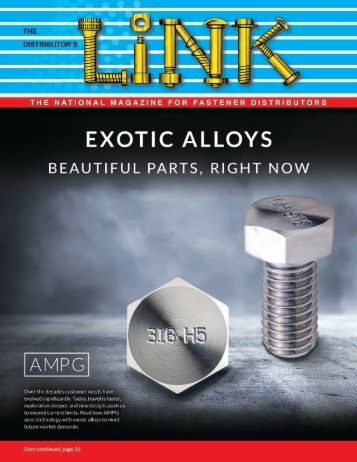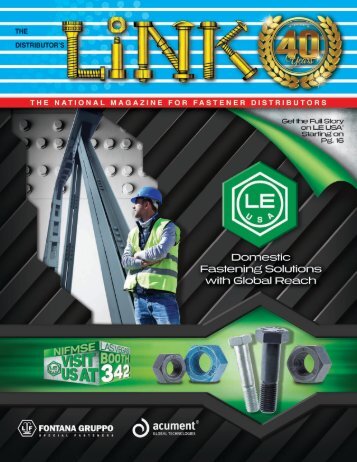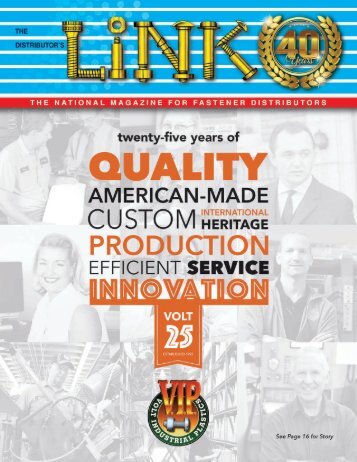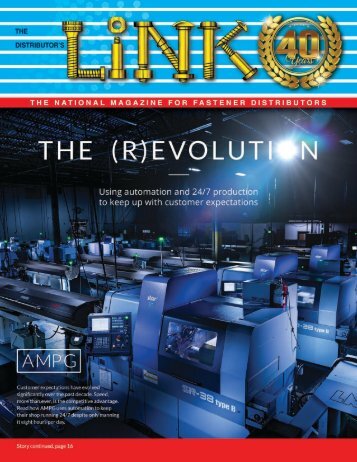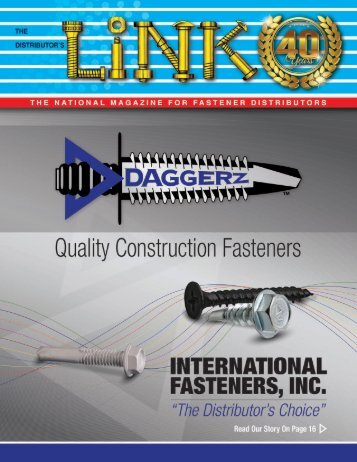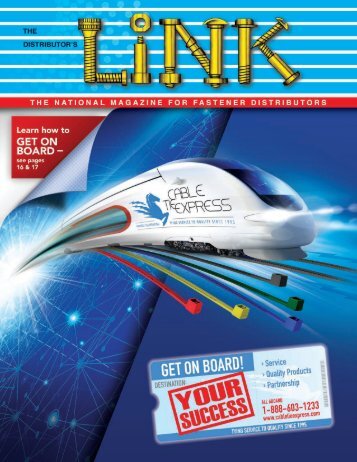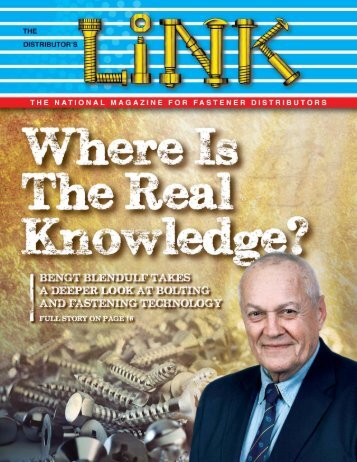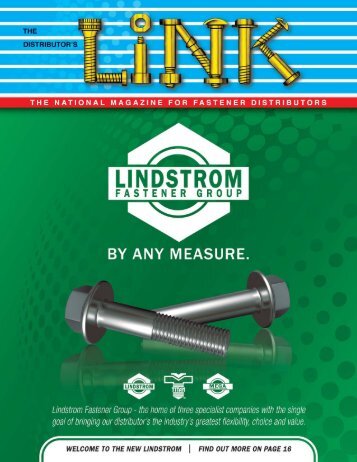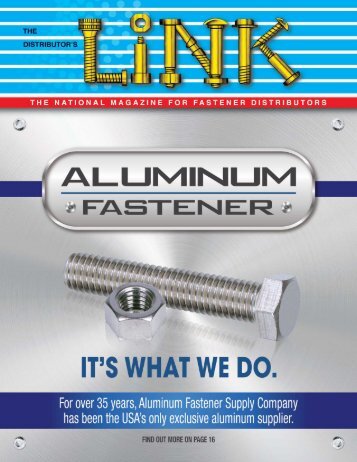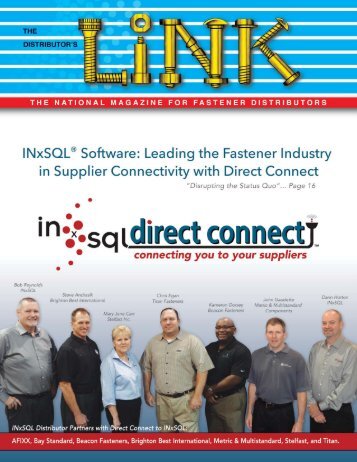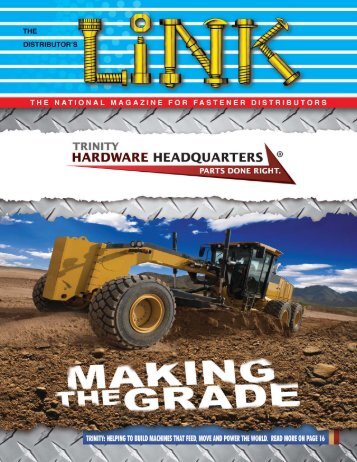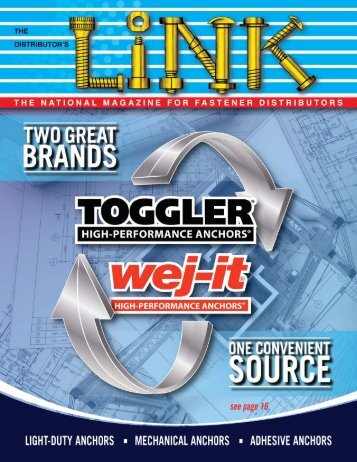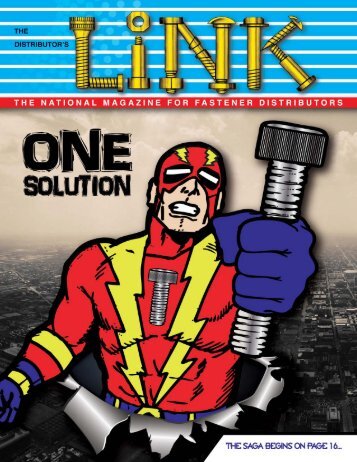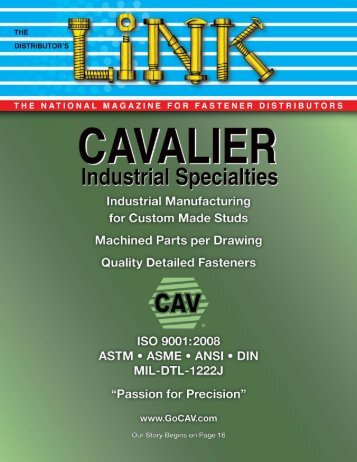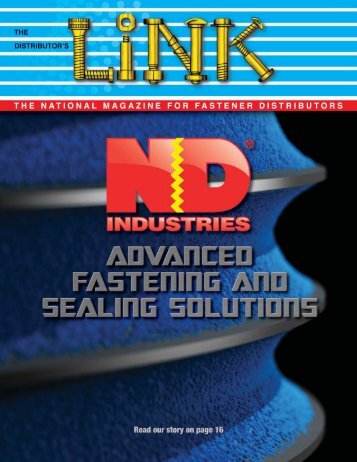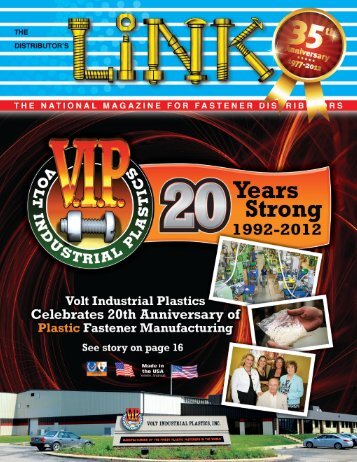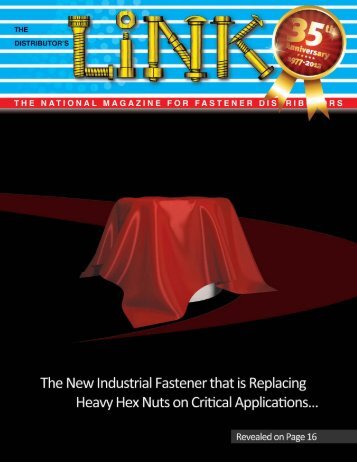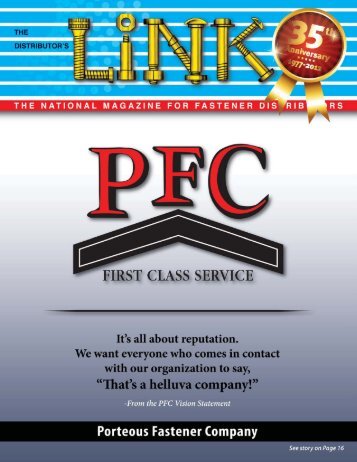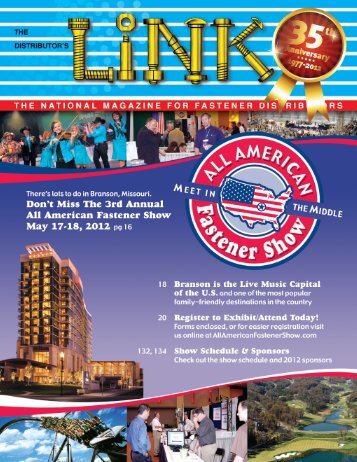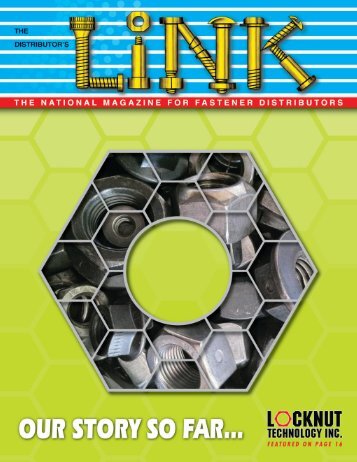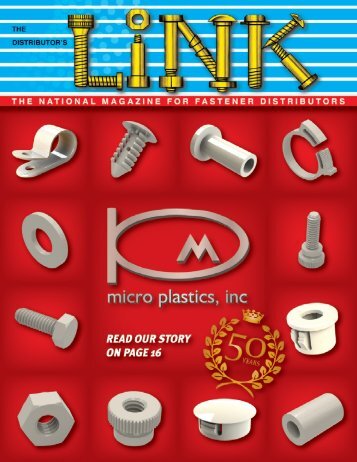WINTER 2023
- Text
- Wwwgraphikacreativecom
- Manufacturing
- Association
- Distributors
- Continued
- Components
- Bolt
- Products
- Screws
- Fasteners
- Fastener
96 THE DISTRIBUTOR’S
96 THE DISTRIBUTOR’S LINK LAURENCE CLAUS RETAINING RINGS from page 10 FIGURE 1: EXAMPLE OF SHAFT HELD IN-PLACE WITH E-RING Design Considerations Although an entire market for these fasteners exists, it must be understood that these fasteners are a unique solution to a narrow set of applications. Even though they can be designed to provide some spring tension to compensate for tolerances or provide a “snug fit”, they are not designed to generate high clamping loads. Thus, they cannot be used in clamped joints where two or more components are held together by a clamping load. Therefore, they are essentially an elegant solution for retaining components in internal bore holes or onto shafts. When planning such applications designers must work through seven design steps. [1] WHICH TYPE OF RETAINING RING TO USE The first step of the design process is to assess the required performance criteria and the design’s limitations to determine which style of ring is best to use. Retaining Rings fall into four general classifications: {A] Tapered Section Rings: These provide ring to groove contact over the entire contacting surface and are appropriate for applications that must accommodate higher loads. {B] Constant Section Rings: These do not provide full radial contact but rather contact at two or three distinct points. With less radial contact, they are intended for medium to low load applications. {C] Spiral Rings: These must be axially installed and provide full, 360° contact. {D] Circular Push-on Rings: These rings have teeth like a toothed lock washer and are pushed into place. They are only for very low load applications. To determine which of these four categories and the right style to use, designers must ask themselves some questions: ¤ What components need to be retained? If the component that needs to be retained is inside a bore hole or housing, then the designer must choose a ring appropriate for internal installations. If the assembly is to retain a component on a shaft then the designer must choose a ring appropriate for external installations. ¤ What load demands are required on the ring? Rotating bodies generate an axial force, known as thrust, which pushes axially along the centerline of the rotating part. The faster the body turns the more thrust developed. Therefore, if the proposed ring is intended to retain, say a gear onto a shaft, the designer must know how much potential thrust the ring is required to withstand. The magnitude of the developed thrust determines which type and style of ring can be utilized, the direct amount of necessary engagement between the ring and groove, the amount of shoulder created by the ring, and the thickness of the ring. ¤ Does the ring need to provide some spring retention? Like all manufactured products, rotating assemblies are designed with some tolerance. Because it is impossible to manufacture to exact values, tolerances provide minimum and maximum limits which make it feasible to assemble components together. CONTINUED ON PAGE 144
THE DISTRIBUTOR’S LINK 97 The Metropolitan Fastener Distributors Association (MFDA) congratulates its newest Hall of Fame inductee, Ken Schneeloch, Jr. Ken Schneeloch, Jr., of Michael F. McCormick Associates Inc., was inducted into the MFDA Hall of Fame at the dinner following the 2022 MFDA Table Top Show in September. Ken has been a member of the MFDA for over 40 years. He has served on the MFDA board of directors for much of that time, and for 25 years served as the MFDA’s secretary. In 1995, Ken had the idea to hold a golf outing the day before a tabletop show. 27 years later, it has now become the MFDA’s favorite social event. Ken was joined at the dinner by his wife Nancy, and their daughter Marissa. Their son, Kevin, an MFDA Scholarship recipient, is at James Madison University in Virginia. Congratulations Ken and thank you for your service to the MFDA. The MFDA Hall of Fame was founded in 2016 to honor those who have made significant contributions to the Association or the Fastener Industry as a whole, past recipients include Irwin Tanzman, Christopher George, Pat Lang, Bill Lang, Bill Fivehouse, Doug Thonus, Chuck Halpin, Sidney Cohen, Ron Jones, Leslie Sieper, and Roger Stillman. For more information contact the Metropolitan Fastener Distributors Association at P233 Rock Road #205, Glen Rock, NJ 07452. Tel: 201-254- 7784, Fax: 201-612-0638, Email: mfdaboard@ gmail.com or visit them online at www.mfda.us.
- Page 6 and 7:
In the Winter 2023 issue of 6 DISTR
- Page 8:
6 THE DISTRIBUTOR’S LINK David Fr
- Page 12:
10 THE DISTRIBUTOR’S LINK Laurenc
- Page 16:
14 THE DISTRIBUTOR’S LINK Bruno M
- Page 30:
28 THE DISTRIBUTOR’S LINK Chris D
- Page 34:
32 THE DISTRIBUTOR’S LINK THE PHI
- Page 40 and 41:
36 THE DISTRIBUTOR’S LINK Larry B
- Page 42:
38 THE DISTRIBUTOR’S LINK PIVOT P
- Page 46:
42 THE DISTRIBUTOR’S LINK Robert
- Page 50: 46 THE DISTRIBUTOR’S LINK CLASS C
- Page 53 and 54: MID-WEST FASTENER ASSOCIATION SCHOL
- Page 55 and 56: THE DISTRIBUTOR’S LINK 51
- Page 58 and 59: 54 THE DISTRIBUTOR’S LINK Jim Tru
- Page 60: 56 THE DISTRIBUTOR’S LINK Jo Morr
- Page 63 and 64: THE DISTRIBUTOR’S LINK 59
- Page 65 and 66: THE DISTRIBUTOR’S LINK 61
- Page 68 and 69: 64 THE DISTRIBUTOR’S LINK METROPO
- Page 70 and 71: 66 THE DISTRIBUTOR’S LINK TEL 323
- Page 72 and 73: 68 THE DISTRIBUTOR’S LINK Nelson
- Page 74: 70 THE DISTRIBUTOR’S LINK SPIROL
- Page 77 and 78: STAFDA 46th ANNUAL CONVENTION & TRA
- Page 79 and 80: THE DISTRIBUTOR’S LINK 75
- Page 81 and 82: NCFA HOLIDAY PARTY AT TOP GOLF DECE
- Page 83 and 84: THE DISTRIBUTOR’S LINK 79 UNICORP
- Page 86: 82 THE DISTRIBUTOR’S LINK Happy N
- Page 90 and 91: 86 THE DISTRIBUTOR’S LINK The NEF
- Page 92 and 93: 88 THE DISTRIBUTOR’S LINK MID-WES
- Page 94: 90 THE DISTRIBUTOR’S LINK R&R Eng
- Page 97 and 98: Fry Steel Company is setting trends
- Page 102 and 103: 98 THE DISTRIBUTOR’S LINK GUY AVE
- Page 104: 100 THE DISTRIBUTOR’S LINK BRUNO
- Page 108 and 109: 104 THE DISTRIBUTOR’S LINK CHRIS
- Page 110 and 111: 106 THE DISTRIBUTOR’S LINK ABSOLU
- Page 112 and 113: 108 THE DISTRIBUTOR’S LINK LARRY
- Page 114 and 115: 110 THE DISTRIBUTOR’S LINK PIVOT
- Page 116: 112 THE DISTRIBUTOR’S LINK ROBERT
- Page 119 and 120: THE DISTRIBUTOR’S LINK 115 The La
- Page 121 and 122: THE DISTRIBUTOR’S LINK 117 JOE DY
- Page 123 and 124: THE DISTRIBUTOR’S LINK 119 JIM TR
- Page 125 and 126: THE DISTRIBUTOR’S LINK 121 AFC In
- Page 127 and 128: INTERNATIONAL FASTENER EXPO - WELCO
- Page 129 and 130: THE DISTRIBUTOR’S LINK 125
- Page 131 and 132: METROPOLITAN FASTENER DISTRIBUTORS
- Page 133 and 134: THE DISTRIBUTOR’S LINK 129 ND Ind
- Page 135 and 136: STAFDA 46th ANNUAL CONVENTION & TRA
- Page 138 and 139: 134 THE DISTRIBUTOR’S LINK IMSM I
- Page 140 and 141: fastenerlinks THE DEFINITIVE WEB DI
- Page 142 and 143: fastenerlinks BRINGING YOU THE FAST
- Page 144 and 145: fastenerlinks BRINGING YOU THE FAST
- Page 146 and 147: 142 THE DISTRIBUTOR’S LINK ROB La
- Page 148 and 149: 144 THE DISTRIBUTOR’S LINK LAUREN
- Page 150 and 151:
146 THE DISTRIBUTOR’S LINK GUY AV
- Page 152 and 153:
148 THE DISTRIBUTOR’S LINK BRUNO
- Page 154 and 155:
150 THE DISTRIBUTOR’S LINK ROBERT
- Page 156 and 157:
152 THE DISTRIBUTOR’S LINK CLASS
- Page 158 and 159:
154 THE DISTRIBUTOR’S LINK NELSON
- Page 160 and 161:
156 THE DISTRIBUTOR’S LINK SPIROL
- Page 162 and 163:
158 THE DISTRIBUTOR’S LINK LAUREN
- Page 164 and 165:
160 THE DISTRIBUTOR’S LINK ROBERT
- Page 166:
162 THE DISTRIBUTOR’S LINK LAUREN
- Page 169 and 170:
INTERNATIONAL FASTENER EXPO MANDALA
- Page 171 and 172:
THE DISTRIBUTOR’S LINK 167 CLASS
- Page 174:
advertisers index A ACS MANUFACTURI
- Page 178:
advertisers index I ISC - INTERCONT
Inappropriate
Loading...
Mail this publication
Loading...
Embed
Loading...
|
SHARE A PAGE FROM THIS MAGAZINE OPTION 1: Click on the share tab above, or OPTION 2: Click on the icon (far right of toolbar) and then click on the icon (far right of toolbar) and then click on the  icon (top right of the page). icon (top right of the page).
|
View Archives
Copyright © Distributor's Link, Inc. All Rights Reserved | Privacy Policy







